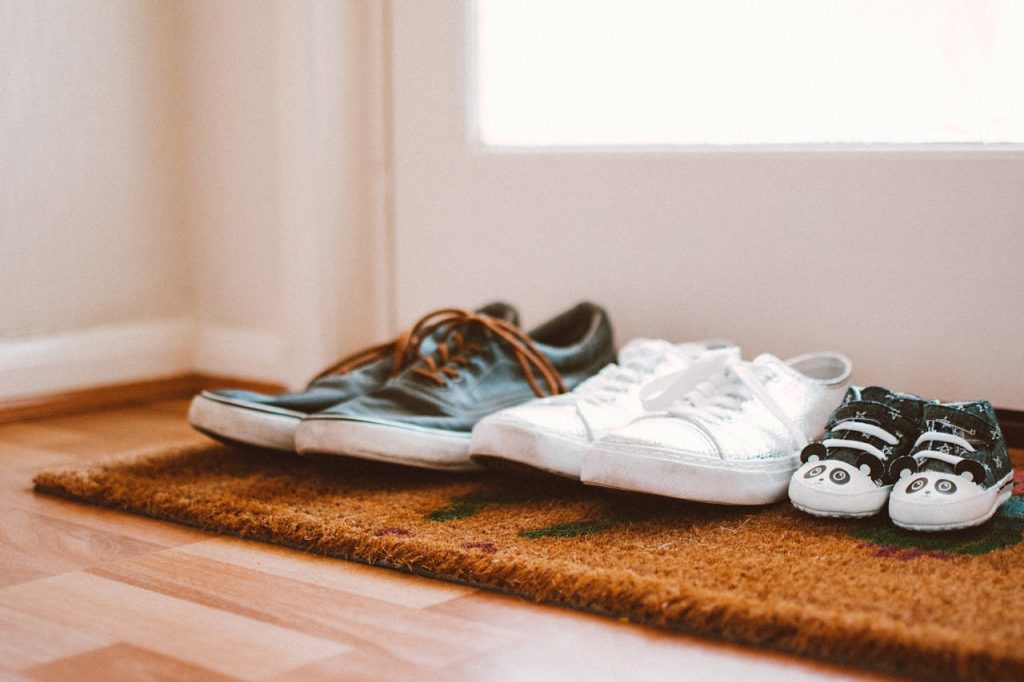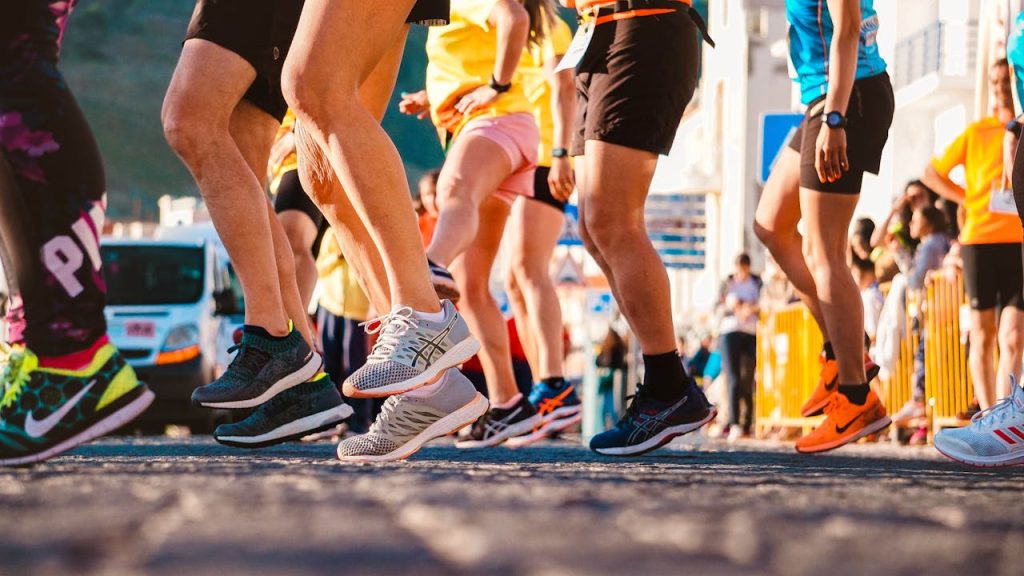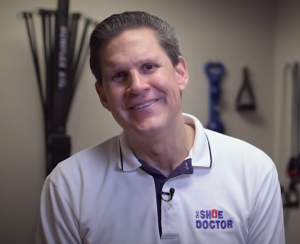Those who actually need custom orthotics tend to be people with chronic foot pain, flat feet, high arches, or conditions such as plantar fasciitis and diabetes that alter their biomechanics. For these individuals, custom orthotics can provide pain relief and offer more optimal support than generic insoles. Conversely, someone with healthy feet and no foot pain most of the time doesn’t need custom orthotics. Most individuals with minor or temporary foot pain are best addressed with nothing more than changing shoes or minor exercises. Understanding the true symptoms and when to seek orthotics staves off wasteful spending on unnecessary care. To illustrate with obvious markings and straightforward rules of thumb, the following sections delineate who benefits most from custom orthotics — and who doesn’t.
Key Takeaways
- Custom orthotics are specialized biomechanical solutions to unique foot structure, function and medical issues. A trained provider’s evaluation is important to see if you actually need them.
- These devices provide more than simple arch support, serving instead as crucial tools to correct gait abnormalities, manage chronic conditions, and enhance mobility and stability for certain users.
- Leading-edge materials and orthotic innovations bring durability, comfort, and adaptability to the table, transforming custom orthotics into a high-tech solution personalized for diverse lifestyles and medical needs.
- Not everyone needs custom orthotics — for a lot of people, good shoes, good generic insoles, and exercises can go a long way.
- A comprehensive evaluation—including medical history, physical examination, gait analysis, and precise imaging—ensures orthotics are prescribed only when truly beneficial and are designed for optimal effectiveness.
- Getting the most out of custom orthotics requires realistic expectations, a slow adaptation process, and regular professional follow-up, underscoring the need to contextualize orthotics within a holistic approach to lifelong foot care.
Who Truly Needs Custom Orthotics?
They’re not for every person with foot pain. They’re for individuals whose feet have specific requirements that cannot be adequately addressed by generic, off-the-shelf inserts and should never be used without a thorough evaluation by a health-care provider who can examine structural issues, movement patterns, and medical conditions. Things like athletes, individuals who have chronic or severe pain, and those complicated with health issues in their feet might get the most benefit. Not all pain demands a bespoke solution; after all, occasionally, a humble over-the-counter insole will do the trick.
Structural Deformities
Flat feet and high arches are the most common structural deformities that can make walking or standing painful. In these instances, custom orthotics can assist by stabilizing the foot and correcting weight distribution across it. This can relieve pain in the feet, knees or back caused by misalignment. Using orthotics early on individuals with deformities such as bunions, hammertoes, or severe heel pain can prevent these issues from progressing and even assist with everyday comfort.
Functional Instability
These are the people whose ankles roll or whose feet slip as they move quickly. Custom orthotics can steady the foot, which helps keep motion controlled and can reduce the risk of injuries like sprained ankles. Athletes or those with physically-active occupations, particularly if they’ve had previous falls or injuries, could be helped by this added stability. Improved balance and control can translate to improved performance on the field and less wear on other joints.
High-Impact Lifestyles
Custom orthotics assist runners, dancers or workers who stand for hours on unforgiving floors. These individuals tend to require more impact absorption than typical insoles provide. Custom supports distribute pressure, reduce fatigue, and defend against stress injuries. For instance, a runner with persistent shin pain or a nurse with fatigued feet after long shifts may experience genuine improvements in comfort and time to recover by using orthotics created specifically for their requirements.
Neurological Conditions
Neurological disorders, such as MS, stroke, or cerebral palsy, can make foot movement and balance challenging. Custom orthotics provide the specialized support required when nerves or muscles are malfunctioning. They help compensate for deformities in foot shape or gait, enabling patients to ambulate more effectively and maintain independence. These supports are tailored to the individual’s specific foot requirements.
Systemic Diseases
Diabetes and arthritis can wreak havoc on the feet, frequently in ways that require special attention. For instance, a diabetic who has lost sensation in their feet can utilize custom orthotics to reduce the risk of ulcers or infections. Individuals with severe arthritis may require additional padding and support to relieve pain and prevent further deterioration. Good foot care, combined with regular checkups and the proper support, assists these individuals remain active and steer clear of bigger issues.
The Decisive Evaluation Process
A thoughtful process of evaluation is crucial to discovering who really needs prescription orthotics. It’s not just grabbing a set of insoles off the shelf. It studies foot pain, athletic performance, medical requirements, and foot functionality daily. A trained provider—such as a pedorthist—takes the lead, employing this decisive evaluation process to ensure the right option is selected for every individual.
- We begin with a comprehensive history, including pain and previous treatments to determine if orthotics can provide relief.
- Next, a comprehensive physical exam examines foot structure, arch height as well as any obvious problems or asymmetries.
- A gait analysis measures how a person walks and if they have any movement abnormalities.
- Detailed imaging — X-rays or 3D scans — to identify underlying issues and inform design.
- They go over all results with the patient and talk about what options fit best – custom or prefabricated.
- We use the appropriate casting technique to capture the orthotic to the foot’s neutral shape.
- Cost and practicality are justified, because custom orthotics run $200–800, based on materials and expertise.
Your History
A doctor collects information about foot pain, injuries and any other medical conditions, like diabetes or arthritis, that might impact foot health. They inquire about day-to-day activities, and sports, and shoes worn to gain a better understanding. Open discussion between patient and provider is key, because this assists align treatment with practical necessities. Previous treatments, such as physical therapy or OTC insoles, are examined to understand what worked, what didn’t, and why.
Physical Examination
Feet inspected for shape, arch height, bunions, or other obvious issues. The supplier tests the strength and flexibility of the feet and ankles, observing motion restrictions. If they’ve lost feeling in their feet—typically from diabetes—or have bad circulation this is flagged. Everything is documented, which aids in selecting or tailoring the appropriate orthotic.
Gait Analysis
A gait analysis depicts the foot movement and weight when walking or running. Other clinics employ sensors or cameras to record and analyze every step, which assists in detecting issues such as fallen arches or asymmetrical gait. Both standing and moving are key to verify, as some problems only manifest themselves during motion. The analysis may detect subtle indicators that a custom orthotic could remedy.
Precise Imaging
Imaging tools, such as X-rays or 3D scans, for more detail. These images detect bone structure, joint complications, or other underlying concerns. For complicated instances–such as deep scars or nerve damage–imaging is crucial. The right picture assists in mapping the treatment and guaranteeing the personalized orthotic fits where necessary.
When Alternatives Make Sense
Custom orthotics are not necessary for every sore foot. A lot of people get actual relief by taking alternative steps first — especially when pain is mild or tied to everyday problems. Custom devices have their time and place, but every once in a while, keeping it simple is just the ticket. Most folks do just fine with alternatives, which are cheaper and more available.
Off-the-Shelf Insoles
- GOOD – for healthy feet or mild pain (plantar fasciitis, heel pain, arch pain)
- Good for temporary relief from the pain of standing or walking.
- Great for minor ailments, not for major disfigurement or diabetes.
- Not meant for big foot structure alterations or advanced arthritis
OTC insoles are typically sufficient for those with standard problems such as heel spurs, knee pain or hip pains. They provide instant relief, are simple to purchase, and are much less expensive than bespoke orthotics. These insoles may support pain from pounding the pavement all day or even minor post-workout aches. They work best when the issue is not associated with complicated foot pathologies or systemic illnesses.
OTC insoles are cheap and are readily replaceable. They lose backing faster as the soft materials degrade. It’s wise to hunt for quality and select insoles that align with your foot type and activity requirements.
Proper Footwear
Putting on the right shoes is the foundation to foot health. Properly fitted shoes distribute your weight evenly, reduce friction and prevent blisters or corns. They can relieve foot and lower leg pain from standing, walking or running and can often prevent or eliminate the need for orthotics.
Supportive shoes count even with custom or OTC insoles in place. That’s a shoe with firm arch support, a wide toe box and just the right length, which maintain alignment and reduce the chance of injury. Most just have their pain subside by changing to better fitting or more supportive shoes.
Individuals with special needs, such as flat feet or high arches, should consult a shoe fitter or podiatrist. This assists select footwear that suit their unique foot shape and wellness intentions.
Targeted Exercises
- Toe curls and towel scrunches
- Heel raises and calf stretches
- Ankle circles and resistance band exercises
- Balance drills on one foot
Regular exercise strengthens the feet and ankles. Stretching the calves and plantar fascia can relieve tension and increase mobility. Stronger muscles can better support the foot arch, distribute forces, and reduce the demand for external assistance.
Consistent work outs are the secret to permanent effectiveness. Small daily efforts can make a big difference in pain and function. For optimal results, most will want to work with a physical therapist. Customized plans for every individual provide better advances and reduce the risk of new harm.

The Unspoken Orthotic Truths
Custom orthotics are the buzzword solution to foot pain, but their true worth is more nuanced. Not everyone benefits equally, and there are caveats to their use. Here are common misconceptions to clear up:
- Custom orthotics fix all foot pain.
- Flat feet or overpronation always require orthotics.
- Anyone can use orthotics safely.
- Benefits are instant and last forever.
- Orthotics never need adjustment or replacement.
A Lifelong Partner
For many chronic foot sufferers, including those with plantar fasciitis or diabetic foot problems, custom orthotics are not a quick fix. Instead, they can be for life. As people get older, their feet can change in form and condition, which could require visits to a specialist. These visits help guarantee orthotics stay working, fit well and continue to support foot health. We should view orthotics as just one piece in their complete foot care strategy, not a remedy or silver bullet.
The Break-In Period
Generally it takes the average person a minimum 1-2 weeks to acclimate to custom orthotics. In the meanwhile, your body adjusts to the new pressure locations and modified walking style. You have to begin by putting them on for short intervals, gradually increasing time, to prevent irritation or even pain. Sometimes, fine tuning from a specialist is necessary as the body reacts. Patience is the thing. Hurrying this step can cause blisters, soreness or even exacerbate pain.
Not a Magic Bullet
Custom orthotics aren’t for everyone. Although they do alleviate pain from a few special conditions, they’re hit or miss. For certain individuals, relief is noticeable, while for others, it may be minimal. Orthotics play really well in a broad treatment plan. This might consist of physical therapy, foot strengthening exercises, footwear modifications and weight loss. Preventive measures, such as stretching, good shoes, and maintaining a healthy weight, count just as much. True advancement comes from taking a big picture view of foot health.
The Investment Question
Custom orthotics are, well, custom made for you, but their hefty upfront price and ambiguous research on their lasting worth pose an honest dilemma. They want to know when paying the price is a wise decision and when it isn’t. The following table summarizes the key costs and considerations.
Financial Factor | Initial Range | Long-Term Value | Insurance Coverage |
Cost to Make | ≤ $100 | Resurfacing: $50–$100 | May cover if prescribed |
Retail Price | $200–$800 | Lower medical costs possible | Varies by region/plan |
Prefab Orthoses | $50–$150 | Often as effective (study) | Sometimes included |
Value for Complex Cases | Higher | Prevents future injury | More likely covered |
Initial Cost
Custom orthotics have a sticker price that can shock a lot of people. Most run from $200-$800 a pair, though materials and labor are typically under $100. What fuels this markup? It’s usually the craftsmanship involved and the time to construct a device tailored to your foot and walk. For people with complicated foot problems—like severe flat feet, diabetes with poor circulation or arthritic deformities—the care in design is essential, and artisan fingers are a huge portion of the cost. Insurance occasionally eases the burden, but it’s never a sure thing. Most plans only pay if a physician prescribes it for a medical need, not for soothing or athletic use. Due to the expense, others opt to merely resurface old inserts, which can cost $50 to $100. This is a lot less expensive and can go a long way if the base unit is still in good condition.
Long-Term Value
Others say custom orthotics are a scam if you don’t really have a big foot condition, or when pitted against off-the-shelf inserts. A 2009 study even discovered that prefab orthoses can work equally well for certain problems. Still, for folks with chronic pain or complex medical needs, custom orthotics can prevent larger joint or back issues before they emerge. That may be hundreds or thousands of dollars in future medical care. The value becomes even more obvious to those who dealt with it for years, because relief from the pain means more mobility and fewer days missed at work. Not everyone will require this degree of assistance, but for some it’s a genuine investment.
Who Sees the Value?
For most people, custom orthotics aren’t necessary. They work best for those with chronic or serious foot issues. If you’re healthy, active and foot-pain free, a generic insert might do just as well. Some folks will experiment with off-the-shelf inserts initially, then seek out something tailored if discomfort or damage persists. For situations such as diabetes, bad arthritis, or atypical foot shapes, these can be life-altering.
The trick is to balance cost and anticipated reward. Not every foot requires an expensive repair.
Making the Choice
They should speak with an experienced provider and review their insurance. Inquire about prefab first.
Balance price, intensity of pain, how much life is disrupted by foot problems.
Understand that the abilities required to create quality custom orthotics stem from years of experience.
For others, resurfacing old inserts is the wiser, cheaper move.
Conclusion
Custom orthotics can assist those with genuine foot pain, significant arch problems or chronic joint wear and tear. Those with active jobs or runners tend to get the most from them. Not everyone requires that kind of repair. Most people’s feet do just fine with store-bought insoles or minor shoe modifications. Money matters as well. Custom pieces are much more expensive, so consider what your feet actually require before you purchase. If you’re still uncertain, consult a podiatrist or sneaker specialist for guidance. For more foot care and tech tips and real stories, explore the rest of the blog and join the discussion.
Frequently Asked Questions
1. What are custom orthotics?
Custom orthotics are prescription medical devices designed to support and align your feet. They’re crafted specifically for your feet, based on a medical evaluation.
2. Who should consider getting custom orthotics?
Folks with chronic foot pain, flat feet, high arches, or certain medical conditions like diabetes may benefit most. A good doctor can tell you if you really need them.
3. Can I use over-the-counter insoles instead of custom orthotics?
Yes, if you have minor aches or need general support, then OTC insoles can be beneficial. Custom orthotics are most appropriate for certain medical issues or stubborn pain.
4. Are custom orthotics covered by insurance?
Coverage depends on the country and the plan. See if your provider covers custom orthotics.
5. How long do custom orthotics last?
Custom orthotics usually last between 1 and 5 years, depending on use and material. Regular check-ups help make sure they still fit your needs.
6. Do custom orthotics work for everyone?
No, not everyone needs custom orthotics. They work best for folks with diagnosed foot issues or pain that hasn’t gotten better through other means.
7. What should I expect during an orthotic evaluation?
A podiatrist will examine your feet, gait and occasionally make a cast or scan. This makes sure the orthotic is customized to you.
Stop Letting Foot Fatigue Slow You Down — Get Relief With Custom Orthotics From The Shoe Doctor
If your feet feel sore, heavy, or worn out after a long day, custom orthotics could be the game-changer you’ve been looking for. Whether you’re on your feet for work or daily errands, fatigue often comes from poor support, uneven pressure, and misalignment. Our custom orthotics are built to correct those issues—supporting your arches, improving posture, and helping you stay energized throughout the day.
At The Shoe Doctor, we’ve spent over 20 years creating orthotics that do more than cushion your feet—they target the root causes of pain and fatigue. Using advanced 3D foot-mapping technology, Russell designs orthotics tailored to your foot structure and walking style. Through our partnership with the Spine & Injury Medical Center in San Jose, we also take your overall body mechanics into account to support lasting results.
Located in the South Bay Area? Book your free consultation today and see how custom orthotics from The Shoe Doctor can help you move with comfort, confidence, and less fatigue.
Disclaimer
The materials available on this website are for informational and entertainment purposes only and are not intended to provide medical advice. You should contact your doctor for advice concerning any particular issue or problem. You should not act or refrain from acting based on any content included in this site without seeking medical or other professional advice. The information presented on this website may not reflect the most current medical developments. No action should be taken in reliance on the information contained on this website, and we disclaim all liability for actions taken or not taken based on any or all of the contents of this site to the fullest extent permitted by law.


